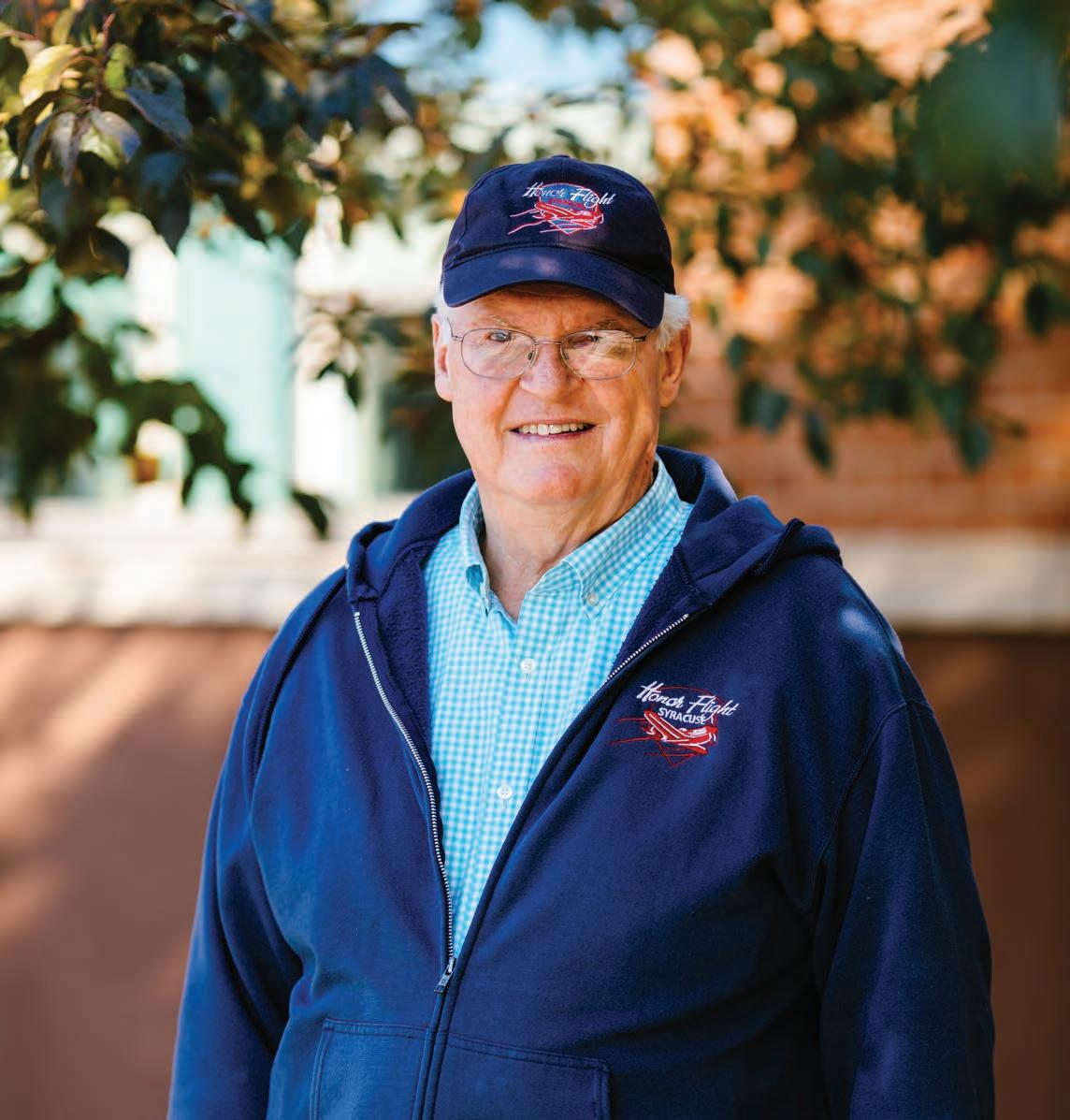
7 minute read
SOCIAL STUDIES
Wildcats returned to campus this fall facing new realities. Social distance: check. Masks: check. Fun on the quad: most definitely check! Arrival Days bags included a stylish Williston face covering, along with maps and schedules.

An early snowfall inspired these JV volleyball players to craft elaborate snowpeople when outdoor practice near Sawyer Field was canceled. Senior class president Adam Thistlethwaite ’21, stern, and Alan Rodal ’22 took a late-November spin on Nashawannuck Pond. Willistonian advisor Matt Liebowitz takes a look at the oldest continuously published student newspaper—which even a pandemic couldn’t stop.
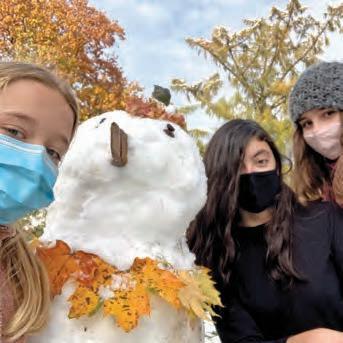
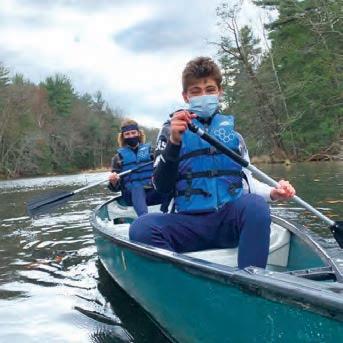
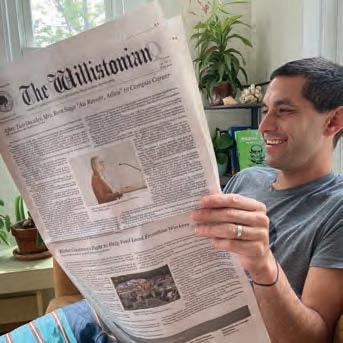
FACEBOOK.COM/WILLISTONNORTHAMPTON
FLICKR.COM/WILLISTONNORTHAMPTON TWITTER.COM/WILLISTONNS INSTAGRAM.COM/WILLISTONNS
YOUTUBE.COM/WILLISTONNORTHAMPTON
AROUND THE QUAD
PITCH PERFECT
In order to preserve Williston’s testing “bubble” this fall, intrasquad scrimmages and drills were the name of the game. Though students missed those long bus rides and championship excitment, they still had plenty of fierce competion. See more of our fall trimester on page 10.
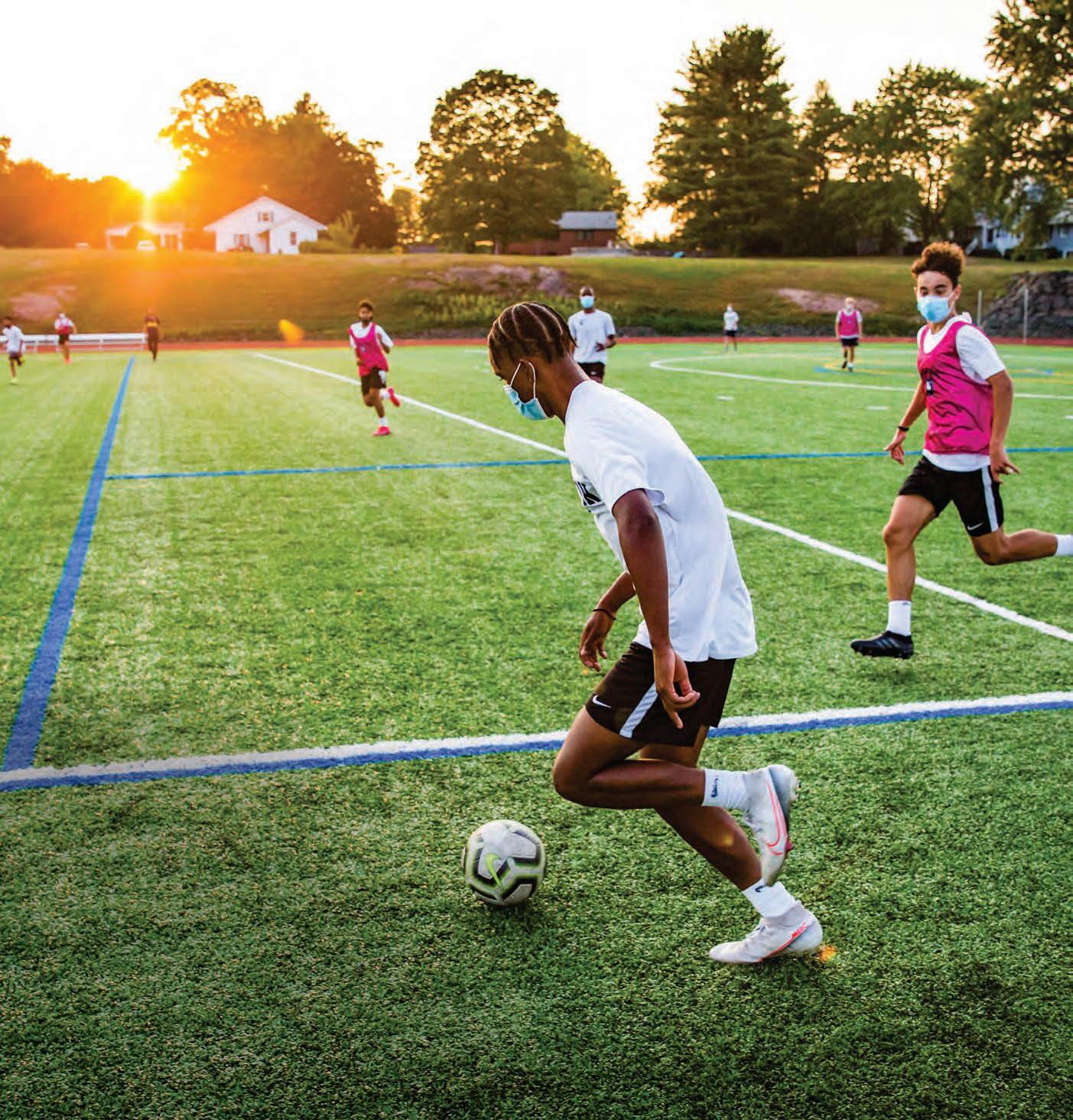
Project Connect
Where can you find dancers chatting with lacrosse players and seniors saying hi to first years? If new school counselor Deborah Potee has her way, the answer is “everywhere.” During a year when mask-wearing and social distancing has put literal barriers between people, she and colleague Joseph Katz have initiated a program called Project Connect, which has been implemented at several colleges and public high schools across the country. Williston is the first independent school to give it a try. This fall, Potee and Katz trained a group of 40 proctors, then students were invited to enlarge their social circles. The first group includes 25 Wildcats who represent a cross section of Williston. The cohort was divided into packs of four to six, who will meet six times over the next few months to get to know one another, with the goal of increasing connection among peers and reducing feelings of isolation. While they represent a multitude of perspectives, said Potee, “what they have in common is a desire to be more a part of Williston.”
MUSIC AS MESSENGER
Grum Project visiting artist Geo Hudson works with students to create a unique song for Williston’s first 180 years
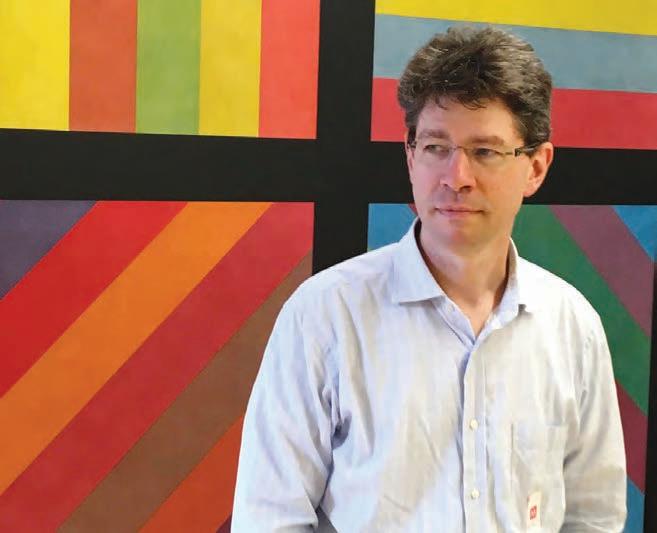
Faced with a planetary crisis, we’re failing to respond,” notes composer and cellist Geo Hudson, who will work with students this winter as part of our alumna-funded artist-inresidence program, the Grum Project. “If science can’t get the message across, perhaps music can.”
That was the thinking behind Hudson’s hourlong oratorio, A Passion for the Planet, which he will speak about during sessions with Williston students in January. Hudson will also give three workshops with AP Music Theory students during the spring trimester. As part of his work with the school, he combined student texts and ideas and created a piece for Williston’s first 180 years, “The Mountain and the Bell,” which will be performed by campus musicians at its premiere in May.
“Our jobs as musicians reach far beyond entertaining,” said Williston Director of Choirs Colin Mann. “We cultivate humanity and share big ideas. Our students are learning to use their voices to create social change within our institution, and as they develop beyond our care as global citizens.”
TRANSFORMATIVE DISCUSSIONS
As part of Willston’s diversity, equity, and inclusion initiative, the school year kicked o with three powerful speakers who led faculty and students in thoughtful workshops and transformative discussions. All student leaders—admission interns, international student leaders, proctors, student council members, and student mentors—gathered for online trainings with Dr. Liza Talusan, to talk about how to create more inclusive environments for students of all backgrounds. Dr. Darnisa Amante-Jackson conducted a two-day training for faculty that focused on building an equitable organizational culture and infrastructure. During a day set aside for students to learn how to have “courageous conversations,” Rosetta Lee talked about microagressions: how harmful they can be, and how to handle being called out for making one. “Having the skills to hold these kinds of discussions is vital to engaging a diverse society,” Lee said.
SWERVING TOWARD DANGER
Knife-sharp language and visceral imagery run through teacher Sarah Levine’s poems
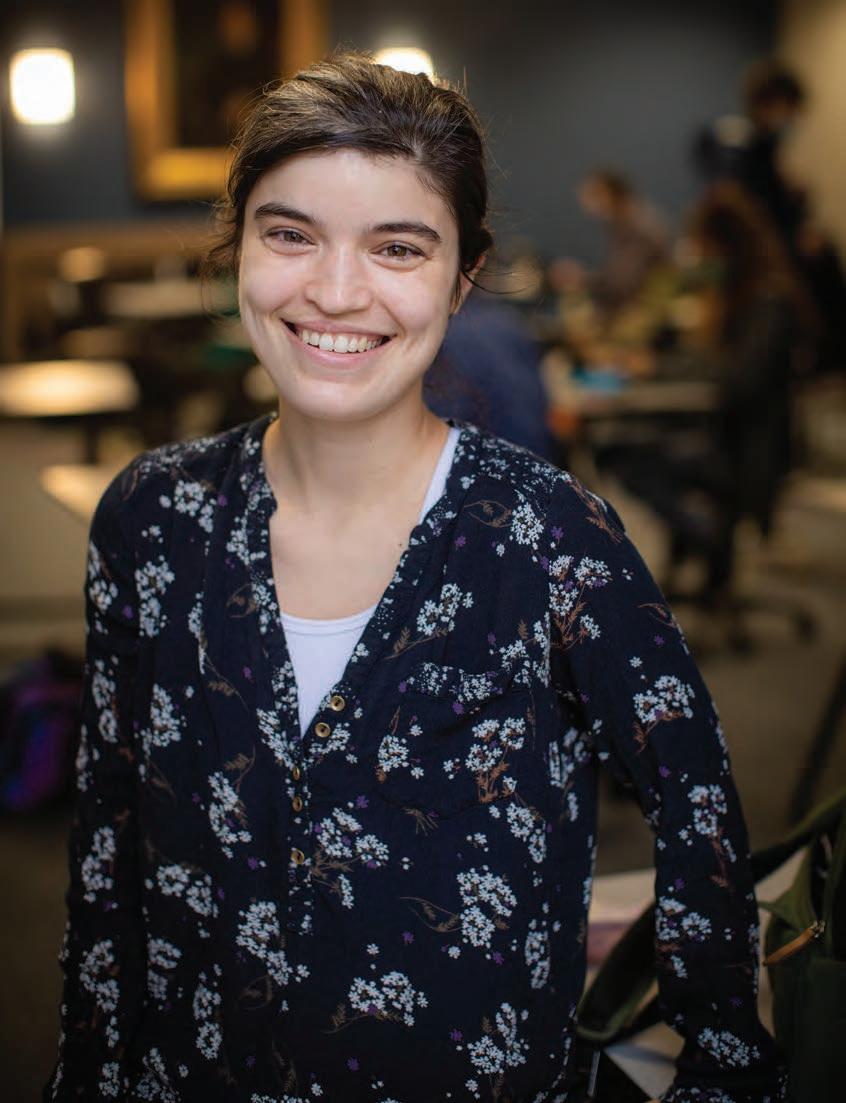
BY MATT LIEBOWITZ
After an accident in the kitchen— you’re slicing a strawberry, but the knife handle slips—there’s that tiny window after the skin is pierced, but before the blood comes. That moment, a few seconds at the most, is where the beauty and power and fear of Sarah Levine’s poems live.
Consider this, from her 2016 poem “I Hear a Goose in the Sky Say Again”: “We started in a bedroom / tossing watermelon out a window, / watching chickens pick for seeds. / Your hand on the back of my neck / and if I told the entire story / I would never get it back.”
Or this, from “Forgotten Things” published in The ParisAmerican: “How absurd / to be given a mouth that craves fruit bruised into sugar. / The forgotten sun gored pulp, originally gnawed by rain and the inch worm’s / grotesque bite.”
Images like these fill the work in Levine’s new chapbook, Take Me Home, released this fall by Finishing Line Press.
A Williston Middle and Upper School English teacher since 2019, Levine has had work in Best New Poets, PANK, Fourteen Hills, Green Mountains Review, and other journals; she won The Westchester Review’s Writers Under 30 prize and has been nominated for a Pushcart Prize. She wields language with an ear for what she calls “vivid, violent,” and visceral imagery.
“I like surprising the reader,” Levine said. “I never want the reader to feel complacent or safe. Basically, I write the opposite of who I am as a person and teacher.”
In the classroom, Levine’s even demeanor and intentional, passionate approach has won her fans in both her seventh grade and senior AP Literature classes. On paper, however, another side of her gets the chance to speak.
In writing poetry that “always swerves towards danger,” Levine said, “I give myself permission to feel ugly things. Hopefully I’m not so intense in the classroom,” she jokes.
Cutting and brutal, tender and intimate, the knife-sharp language in Take Me Home is informed by the multitude of lives Levine’ has lived while pursuing her passion.
As a young writer, Levine attended the New England Young Writers’ Conference at Middlebury College’s Bread Loaf campus, and the Young Writers Workshop at Kenyon College. Along with a 2010 B.A. in English from the University of Massachusetts, Levine earned her first postgraduate degree, an M.F.A. from Sarah Lawrence College, followed by a master’s in teaching from Smith College. Levine then taught creative writing at the Baccalaureate School for Global Education, a public school in Queens. But it was her experience teaching the “Right to Write” course at the Westchester Department of Correction, an all-women’s facility in Valhalla, N.Y., that had the biggest e ect. “It was amazing,” Levine says. “It taught me about systemic racism, about how much I don’t know.”
“Right to Write” gave Levine a platform to teach di erent styles of writing to the students, all of whom were mothers or grandmothers. The women then wrote original stories to their children, which they recorded; the tapes and the stories were mailed home so their children could listen to the stories at night.
The importance of giving a voice to those who may otherwise not be heard informs the poems in Take Me Home. The chapbook is a series of persona poems chronicling the misadventures of the protagonist, Herman, following his mother’s sudden death. Set in an imaginary Southern Gothic location, the book started as a graduate school project; she’s been “tinkering, adding, and evolving” the poems since 2012.
Levine cites the influence of John Berryman—whose “Henry poems,” are “so weird, in the best possible way: vivid melancholy, vibrant” — as well as writers such as Terrance Hayes, Keith S. Wilson, Lauren Berry, Carl Phillips, Franny Choi, Richard Siken, and Donna Tartt. These esteemed authors have given Levine a community, a voice, the freedom to explore and express.
In the spirit of community and of poetry as a uniting force, Levine is also doing her part to tie her creative pursuits into the larger fabric of the community. The cover art of Take Me Home was drawn by Williston eighth grader Elise Ollmann-Kahle, and all the proceeds she makes from the collection will be donated to the Equal Justice Initiative.





